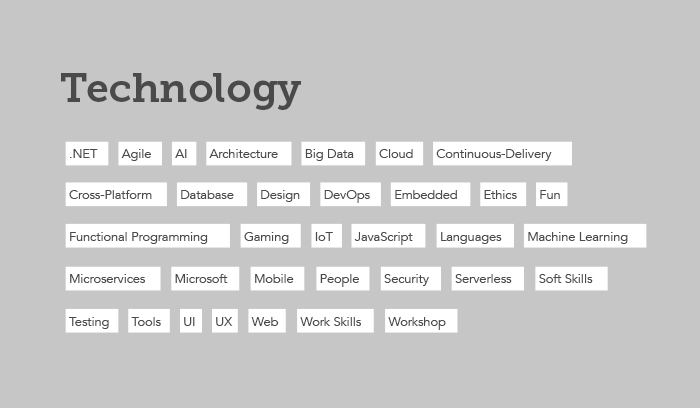Predictive Maintenance, Why, What, and How
Do you have SCADA or sensor data that are of no use to you? Does an unexpected failure create downtime and waste? Are your engineers overworked and bored due to constant callouts?

During all this activity, do you carry out a lot of resource-intensive, regular preventive maintenance?
Do you need to take measures enabling you to achieve more sustainable production?
Why?
Implementing predictive maintenance provides several potential benefits.
You can monitor the condition of your equipment and carry out maintenance only when required.
- This means a lower incidence of unexpected equipment failure and maintenance can be carried out outside production hours.
- This makes the equipment more reliable and leads to less lost production.
- At the same time, you will have more time to plan maintenance activities, resulting in more efficient maintenance and fewer callouts.
- Less need to hire any subcontractors at a high cost.
Carrying out maintenance only when needed leverages the full potential service life of the equipment.
- If you compare this approach with carrying out regular periodic preventive maintenance, you will, in the long run, make significant savings by performing maintenance only when necessary.
According to the report "Reducing operation and maintenance costs" (Emerson Process Management), 30% of regular preventive maintenance is necessary, 30% is unnecessary, and the remaining 30% is damaging to the equipment.
- The same report states that 86% of maintenance is reactive – too late, or preventive (unnecessary).
- Avoid unnecessary and damaging maintenance through condition-based predictive maintenance. This means fewer resources are wasted and promotes greater sustainability/improves your carbon footprint!
- Warranties from suppliers can often be maintained with longer service intervals when the equipment’s condition is monitored.
When combined, these benefits can boost productivity and reduce equipment maintenance costs. A report compiled by DNV GL discovered that companies in the solar power sector, which carried out pilot projects or implemented predictive maintenance, achieved the following results: 12% cost reduction, 9% increase in uptime, 14% reduction in HSEQ risk, and 20% extension of equipment’s service life.
What?
Predictive maintenance is a form of condition-based maintenance and is defined as maintenance carried out based on the equipment's estimated time to failure. Estimates can be derived from mathematical models or analysis of data from images or sensor data through statistics and machine learning. The fundamental question is:
"Based on the equipment’s current condition, when should we carry out maintenance?”
There has been a proliferation of options for collecting and analyzing data in recent years using a variety of methods, including sensor technology, drones, IT infrastructure, machine learning, and statistics. These methods enable us to achieve greater accuracy than before when it comes to making predictions of this nature.
How?
The nature of predictive maintenance differs from one case to the next, so it may be a good idea to start with a pilot project. Identify a recurring error, preferably on a type of equipment that you have several units of and find out which parameters can be monitored to detect the progression to a certain type of failure.
You might already have collected data from i.e. a SCADA system or imagery suitable for this use. If not, new sensors needs to be installed. Sensors are then installed, photos are taken, or data extracted from the SCADA system is used, combined with times when the fault occurred, to estimate the time to failure.
For example, a machine learning algorithm or statistical model might say: “based on historical data, when value 1 is 100 and value 2 is 29, the estimated time to failure is 5 days".
You can also use the logic that triggers or returns a risk class when values go outside the norm (anomaly detection).
Current cases
Prevas is currently collaborating with a customer in the food industry, which carries out predictive maintenance on pumps of the same type in critical processes. The customer’s objective is to prevent the failure of critical equipment, which will entail production stoppages and large quantities of spoiled products.
We have also developed for a renewable energy operator a Proof of Concept (PoC) machine learning algorithm for predictive maintenance for Power inverters. This can prevent interruptions affecting electricity production and ensure less lost production during the hours when there is sunshine.
Would you like to explore your company's ability to move to predictive maintenance?
If so, please get in touch by sending an email to me. And we will take it from there!
About the author
As 15-year-old, I started working as an apprentice in a manufacturing company and received a certificate in chemical processing. It was the interaction between operation and maintenance that caught my interest during these years.
Later, I went on to study for a bachelor's degree in mechanical engineering at NTNU (Norwegian University of Science and Technology), specializing in operation and maintenance. This is where I got the bug for predictive maintenance, which I wanted to learn more about.
For the past three years, I have worked part-time at Prevas, in the role of a consultant advising on the implementation and adaptation of HxGn EAM. During the same period, I have taken a master's degree in data science at NMBU (Norwegian University of Life Sciences) where my main motivation has been to understand possible ways of putting predictive maintenance into practice.
//Gøran Sildnes Gedde-Dahl, Data Driven Maintenance Consultant, Prevas AS
Kategorier/Taggar
Kontakta oss

Du måste vara inloggad för att få kommentera
Stängd för fler kommentarer
Relaterade artiklar
-

Hur kan vi förbättra användarupplevelsen i gamla system
-

Anna-Karin Alm: Är det bättre att satsa amerikanskt?
-

Hållbara vardagshjältar behövs
-

Stopp i produktionen
-

Verksamheten i fokus
-

Möt produktionsutmaningarna med IndTech
-

Vill du ta ett första steg mot bättre underhållsplanering
-

4 snabba tips när olyckan inträffar på din arbetsplats
-

Vårda och skapa starka lösenord
-

Så får du din produktion att blomstra
-

Är det dåligt att återanvända lösenord?
-

Harmonisering av sensordata gör Internet of Things (IoT) enkelt
-

Hållbar produktion skapas på gränsen mellan ordning och kaos
-

Vad är bra kod?
-

Vad kan industrin göra redan idag för att skapa en hållbar framtid?
-

Har du koll på Agenda 2030, och målen om hållbar industri och produktion?
-

Chilla, låt systemet göra jobbet
-

Välj smart, låt systemet göra jobbet
-

Därför repade sig Chile snabbare än Haiti från jordbävningen 2010
-

Tar pulsen på energibranschen, Vattenfall Eldistribution
-

Internet of Moving Things – Kristoffer om samarbetet med Wittra
-

Mer om DFX, med fokus på Design for Serviceability
-

Tar pulsen på energibranschen, Göteborg Energi
-

I påskharens godislager
-

Mer om DFX, med fokus på Design for Assembly
-

Med digitalisering och fältservice löser man ärenden med färre kundbesök
-

DFX – vad är det
-

Blev det fel eller har julklappen redan pajjat
-

Jultomten har läget under kontroll
-

Jultomten måste planera om resan
-

Jultomten behöver assistans
-

Tre steg till testautomatiserad miljö
-

I Jultomtens fältverkstad
-

Digitalisering av fältservice, film del 2
-

IoT del 4 - vår nya affärsmodell
-

Kemikalielagstiftningar, mycket att tänka på
-

Hur kan industrin utnyttja gamification
-

Digitalisering av fältservice, film del 1
-

Gamification, i din vardag
-

Klinisk utvärdering av medicintekniska produkter
-

Framtidens fastighetsunderhåll – digitala tvillingar i fokus
-

Bildbehandling, inte så komplicerat som det låter
-

IoT del 3 - vår nya affärsmodell
-

Att gå med i ett partnernätverk – vad innebär det för mig
-

Shh - don't say it Innovation too aloud
-

Underhållssystem – varför välja molnet
-

Vad är UX och varför är det så viktigt för mitt företag
-

IoT del 2 - vår nya affärsmodell
-

Nyfiken på hur du kan digitalisera din fältservice
-

Är min app en medicinteknisk produkt
-

Fältservice – vem är din ledstjärna
-

En IoT fabrik på fyra hjul
-

Prototyping i Figma
-

IoT del 1 - vår nya affärsmodell
-

Brexit, Microservices och AI
-

Hello IoT Button
-

Smart Maintenance for competitive edge
-

Taking advantage of electronics in modern healthcare
-

En resa in i framtiden
-

Digitalisering och automation - på rätt sätt
-

Mobil teknologi växer inom hälso och sjukvården


Kommentarer